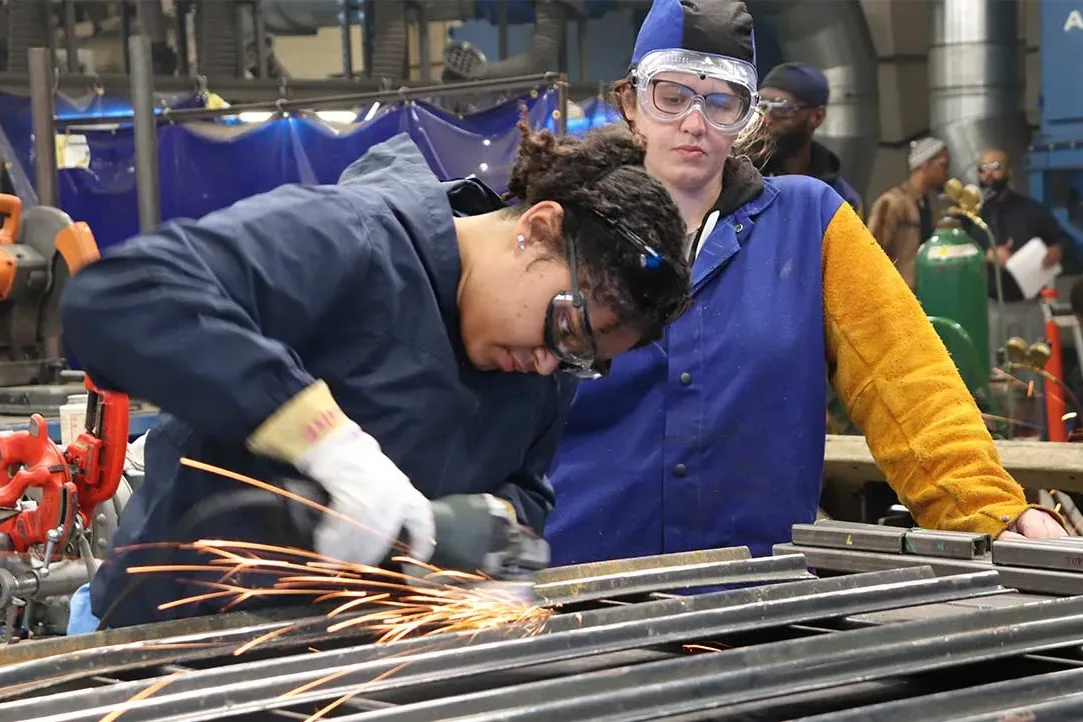Employment opportunities and support for individuals with low vision vary significantly across the globe. Different countries have implemented unique policies and cultural practices tailored to their social and economic conditions. These approaches not only help people with low vision integrate into society but also promote inclusivity and diversity on a broader scale. This article explores employment cultures in Japan, Germany, India, and South American countries, offering insights and inspiration for stakeholders supporting the low-vision community.
Japan: A Service-Oriented Employment Culture
Japan has developed a distinctive employment culture for individuals with low vision, particularly within the service sector.
 1. Traditional Roles in Massage and Acupuncture
1. Traditional Roles in Massage and Acupuncture
Massage and acupuncture are integral to Japan’s traditional healthcare system and represent significant employment opportunities for individuals with low vision. As early as the 20th century, the Japanese government introduced policies encouraging low-vision individuals to train as professional massage therapists. Today, many have established successful careers, contributing to public health and wellness (Nakamura, 2019).
These professions rely more on tactile skills and experience rather than vision, making them well-suited to people with low vision. Additionally, government and local authorities frequently offer advanced training programs to ensure these practitioners stay updated with modern healthcare practices (Tanaka, 2020).
2. Information Technology and Accessibility Design
With the rapid growth of information technology, Japan has expanded employment opportunities for individuals with low vision to include roles in IT and accessibility design. Companies and non-governmental organizations collaborate to provide training in programming, customer service, and software accessibility testing. This not only helps individuals achieve financial independence but also improves the accessibility of digital tools for all users (American Foundation for the Blind, 2023).
Germany: Policy-Driven Inclusive Employment Culture
Germany’s robust social support system has fostered a strong culture of inclusive employment, particularly for individuals with low vision.
1. Subsidies and Incentives for Employers
The German government incentivizes companies to hire employees with low vision by offering financial subsidies, tax breaks, and equipment support. For example, businesses can apply for grants to modify workstations, install assistive technologies, and provide tailored training. These measures reduce the financial burden on employers and encourage them to embrace workplace diversity (Müller, 2021).

Photo Credit:PTTI EDU@Unsplash
2. Vocational Education and Training
Germany’s dual education system also benefits individuals with low vision. Many vocational schools provide customized courses in areas like modern manufacturing, assistive device repair, and 3D printing. Specialized training centers offer opportunities in legal, medical, and administrative fields, enabling low-vision individuals to enter higher-skilled roles (Schmidt & Weber, 2020).
India: Craftsmanship and Traditional Industries
India’s rich heritage in craftsmanship and traditional industries provides unique opportunities for low-vision individuals.
 1. Employment in Handicrafts
1. Employment in Handicrafts
The government and NGOs in India collaborate to train individuals with low vision in handicraft production, including textiles, embroidery, and pottery. These handcrafted items are not only popular domestically but also enjoy strong demand in international markets. Such initiatives ensure a steady income for artisans while preserving India’s cultural heritage (Kumar, 2018).
2. Support from Social Enterprises
In recent years, social enterprises in India have emerged as vital employment platforms for low-vision individuals. These enterprises employ low-vision workers to produce eco-friendly products, such as handmade paper and reusable bags, while leveraging market promotion to enhance their economic independence. This model aligns business goals with social responsibility and elevates the social status of low-vision individuals (Desai, 2019).
South America: Community Support and Employment Diversity
South American countries have developed unique employment cultures centered on community collaboration, especially in handicrafts and agriculture.
 1. Community-Based Cooperatives
1. Community-Based Cooperatives
In countries like Brazil and Peru, low-vision individuals often join cooperatives specializing in traditional crafts, such as leather goods and woven products. These crafts not only generate income but also promote cultural identity on a global stage. International organizations often support these cooperatives by purchasing their goods, providing essential funding (González, 2020).
2. Eco-Tourism and Agriculture
In rural South America, individuals with low vision are encouraged to participate in organic farming and eco-tourism. With appropriate training and tools, they manage farms or guide visitors through cultural sites, achieving economic self-sufficiency while contributing to local economies (Rodriguez & Martinez, 2019).

(TV BRICS, 2024)
Global Insights: Building Inclusive Employment Cultures
The varied approaches adopted by different countries offer valuable lessons for improving employment opportunities for low-vision individuals worldwide:
Strengthening Policy Support and Incentives
Governments should enhance subsidies, tax breaks, and workplace modifications to encourage businesses to hire low-vision individuals.Optimizing Vocational Education and Training
Tailored vocational courses, like Germany’s dual education model, can help low-vision individuals gain specialized skills for high-demand industries.Merging Tradition with Modern Technology
Combining traditional craftsmanship with modern technologies, such as 3D printing, can create diverse employment opportunities.Fostering International Collaboration
Countries can share best practices and success stories to develop globally applicable strategies for inclusive employment.
Whether for low vision or normal vision, every individual deserves equal opportunities and social support. By fostering innovative policies and cultural practices, we can build a more inclusive society. If you want to read more practical articles on low-vision living, visit https://zoomax.com/category/low-vision-information/.
References
American Foundation for the Blind. (2023). Fact sheet: Employment. Retrieved from https://www.afb.org/research-and-initiatives/research/fact-sheets/employment
Desai, R. (2019). Social enterprises and employment for the visually impaired in India. Journal of Development Studies, 45(3), 212–229.
González, A. (2020). Crafting inclusion: Employment cooperatives for low-vision individuals in Latin America. South American Journal of Social Policy, 12(2), 89–102.
Müller, T. (2021). Germany’s inclusive employment policies for disabled workers. European Journal of Social Policy, 28(1), 54–71.
Nakamura, Y. (2019). Traditional healthcare professions and visually impaired individuals in Japan. Asian Journal of Disability Studies, 16(3), 67–84.
Rodriguez, P., & Martinez, C. (2019). The role of eco-tourism in empowering low-vision farmers. Agriculture and Sustainability Review, 29(1), 44–58.
Schmidt, H., & Weber, K. (2020). Vocational education for individuals with disabilities in Germany. Education and Training Quarterly, 13(2), 111–127.
Tanaka, M. (2020). Accessibility testing as an employment opportunity for low-vision individuals in Japan. International Journal of IT Accessibility, 8(4), 99–110.

